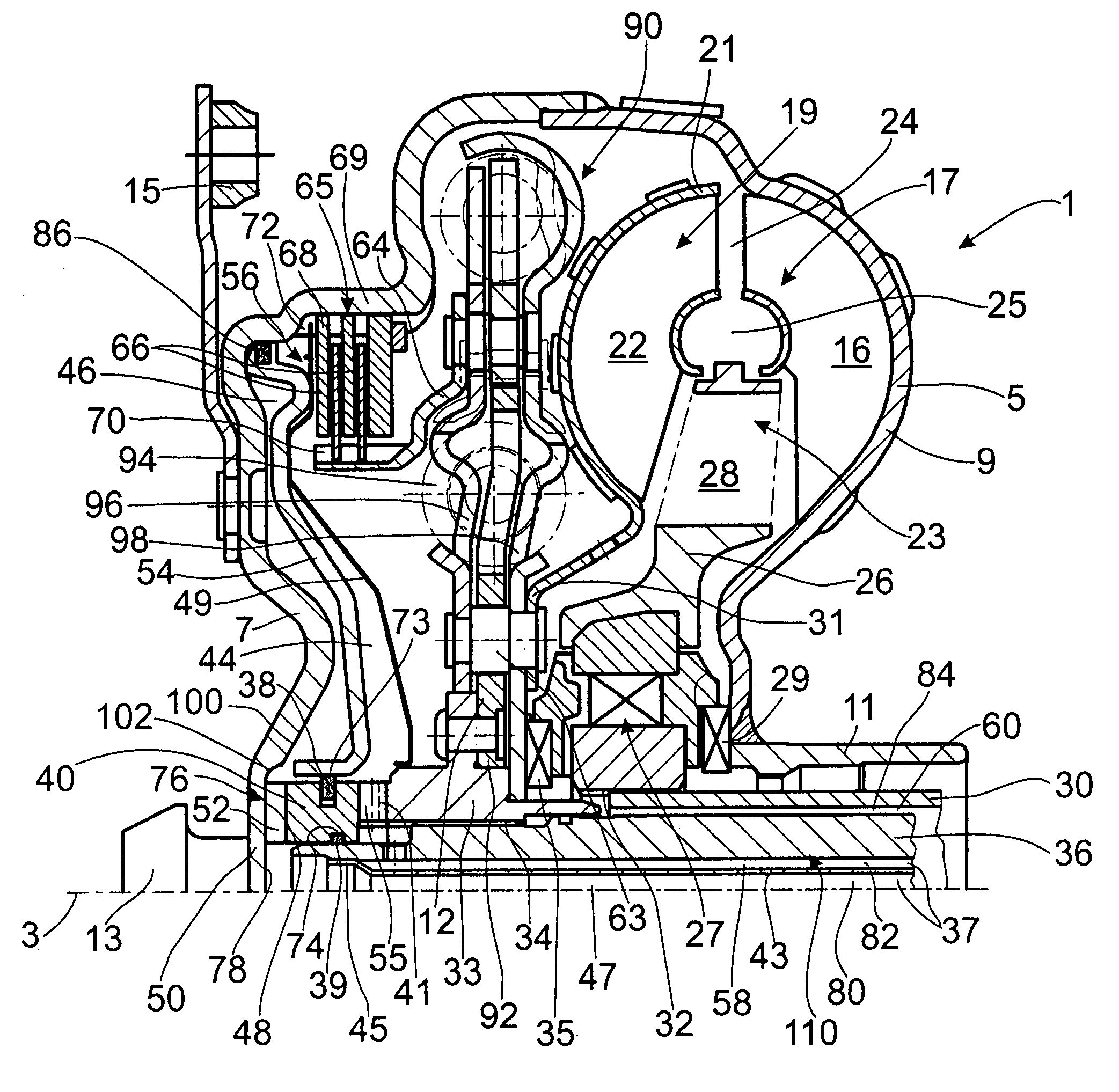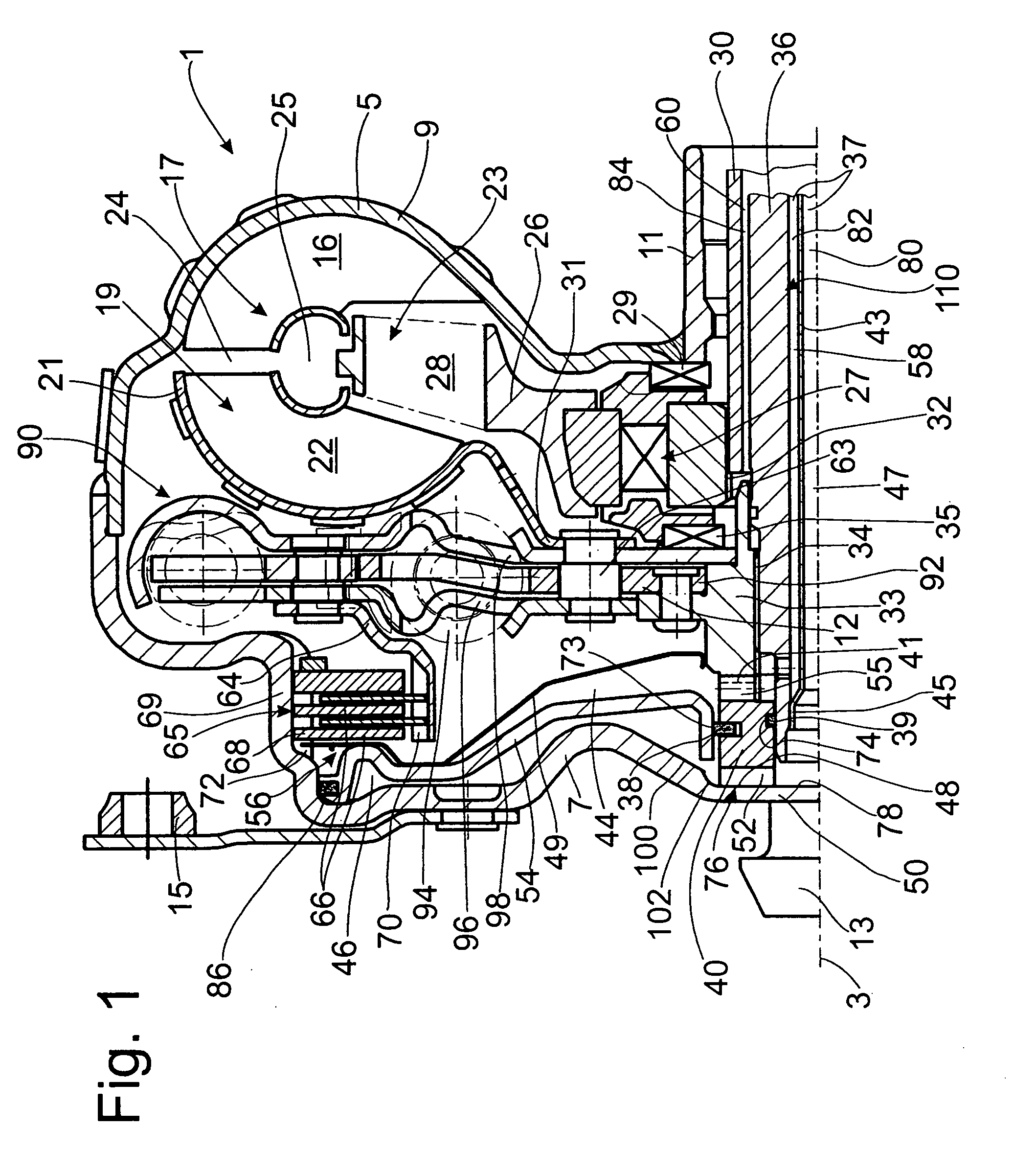Hydrodynamic clutch device
- Summary
- Abstract
- Description
- Claims
- Application Information
AI Technical Summary
Benefits of technology
Problems solved by technology
Method used
Image
Examples
Embodiment Construction
[0027]FIG. 1 shows a hydrodynamic clutch device 1, designed as a hydrodynamic torque converter. The hydrodynamic clutch device 1 has a clutch housing 5, which is able to rotate around an axis of rotation 3. On the side facing a drive (not shown), such as the crankshaft of an internal combustion engine, the clutch housing 5 has a drive-side housing wall 7, which is permanently connected to a pump wheel shell 9. This merges in the radially inner area with a pump wheel hub 11.
[0028]To return to the drive-side housing wall 7: On the side facing the drive (not shown), this wall has a bearing journal 13, which, in a manner which is already known and therefore not illustrated in detail, is supported on an element of the drive, such as the crankshaft, for the drive-side mounting of the clutch housing 5. In addition, the drive-side housing wall 7 has fastening mounts 15, which serve in the conventional manner to allow the clutch housing 5 to be fastened to the drive, preferably by way of a f...
PUM
 Login to View More
Login to View More Abstract
Description
Claims
Application Information
 Login to View More
Login to View More - R&D
- Intellectual Property
- Life Sciences
- Materials
- Tech Scout
- Unparalleled Data Quality
- Higher Quality Content
- 60% Fewer Hallucinations
Browse by: Latest US Patents, China's latest patents, Technical Efficacy Thesaurus, Application Domain, Technology Topic, Popular Technical Reports.
© 2025 PatSnap. All rights reserved.Legal|Privacy policy|Modern Slavery Act Transparency Statement|Sitemap|About US| Contact US: help@patsnap.com



